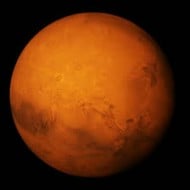Nemesis a companion star to the Sun.
There is no empirical evidence to support any claim for the existence of Nebiru/Nemesis. The Sun is not part of a binary star system. There has never been any evidence to suggest a stellar companion. The idea has been disproved by several infrared sky surveys, most recently the WISE mission. If there were a brown dwarf companion, these sensitive infrared telescopes would have detected it.
funeralxempire
Veteran

Joined: 27 Oct 2014
Age: 40
Gender: Non-binary
Posts: 31,349
Location: Right over your left shoulder
It's obviously hiding inside the hollow earth, lighting things up for the shape-shifting reptilian aliens and powering their advanced alien civilization. ![]()
_________________
The Party told you to reject the evidence of your eyes and ears. It was their final, most essential command.
If you're not careful, the newspapers will have you hating the people who are being oppressed, and loving the people who are doing the oppressing. —Malcolm X
Make America Great (Depression) Again
I read a Superman comic once where Superman met people on the planet which had the same orbit as the Earth but (for some reason) was always on the opposite side of the sun from the Earth - so kind of like the side of the moon we cannot see from Earth humans could never see this "other Earth". Of course now we have sent rockets and satellites off through the solar system and we could have seen such a planet if one existed - or at least the Space Vehicle could have. I am pretty sure no such thing exists, but it makes for a good story. It is still fun to imagine.
And if anyone claims that it does exist I will chase him to the edge of the flat Earth and push him off (if we can avoid the NASA guards). (just kidding - not really).
_________________
ADHD-I(diagnosed) ASD-HF(diagnosed)
RDOS scores - Aspie score 131/200 - neurotypical score 69/200 - very likely Aspie
And if anyone claims that it does exist I will chase him to the edge of the flat Earth and push him off (if we can avoid the NASA guards). (just kidding - not really).
Yes thats a fun old sci fi meme. A twin of the earth, at the same distance from the sun (and just as inhabitable as the earth), in the same orbit as Earth, but on the opposite side of the earths orbit of the sun- so we never see it from earth, because the sun is always blocking our view of it. Too bad we have had interstellar probes in the last fifty years...that woulda seen this twin earth if it were there. Oh well.
But thats in the inner solar system. There is a theory among serious scientists that there could be a nineth planet out in the outer reaches beyond pluto. It could be a gas giant, or even a brown dwarf. But it couldnt be an actual star because even a dim star would be too visible to escape detection.
There's a lot of debate about the orbits of planetoids way out past Neptune. The orbits are oddly elongated and seem to cluster towards one side. Three possible explanations:
1. It's nothing, just a glitch in the data. The way we search for these objects has skewed the results.
2. There's a 9th planet out there, probably 5 to 10 times the size of the Earth, and orbiting about 20 times as far from the sun as Neptune does. Its gravity is shaping the orbits of the planetoids.
3. There's a primordial black hole the size of a tennis ball out there doing the same job. Primordial black holes may or may not actually exist. If they do, they were formed in the early moments of the Universe, and can be a lot smaller than black holes made from exploding stars. They're a possible explanation for the Dark Matter problem, so finding one in our own solar system would solve two problems at once. (It should be harmless unless you go over there and stick your finger in it.)
_________________
You're so vain
I bet you think this sig is about you
| Similar Topics | |
|---|---|
| ‘Patience’ Star Ella Maisy Purvis |
28 Jan 2025, 2:14 pm |
| English star footballer Lucy Bronze is AuDHD |
19 Mar 2025, 6:55 pm |
| Actor John Boyega attacks Star wars fans for his career |
05 Apr 2025, 5:00 pm |
| Scientists Make "Insanely Exciting" Star Discovery |
12 Jan 2025, 7:05 pm |







